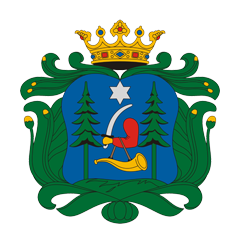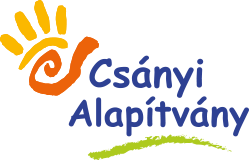
Get to know the Jászság! – Jászdózsa
“16 children from 8 settlements go to the Jászberény Community House in Jászság group 4 and we would like to get to know the values and sights of each other’s settlements. Thus the slogan of one of our summer camps became” Get to know Jászság! ” children’s settlements on a dream tour route we have dreamed of, first of all the families help to map their own village and together with the children they make a description of the sights and a hiking trail, then take photos of the buildings and landscapes. The description was compiled by: Fruzsina Simon Ramóna and her mother, Zoltánné Simon, and Sándor Görbe helped with navigation. ” Hábenciusné Balla Andrea mentor
“Jászdózsa, located in the Northern Great Plain region of Hungary, is a village in Jász-Nagykun-Szolnok county. Its population is 2095 people according to the data of 2018. It covers an area of 42.86 km2. It is located on both banks of the Tarna river. Deviating from the main road 31 after Jászjákóhalma.
Its first written occurrence in 1433 is in a charter. His old name is Dosa, pronounced Dausa / Daosa. The origin of the name is unclear. Today’s village was probably not a Jász “accommodation”, not a Jász settlement, but during the Turkish occupation a Jász settlement called Négyszállás merged, traces of which were excavated in the 1980s on the border section called “Berényi land”, a few km from the village. up. After the expulsion of the Turks, Dósa and Jászberény sued for a long time, which was eventually awarded to Jászberény. The treasures of the excavation can be found in the Damjanich Museum in Szolnok. In this direction, as Népszállás, today there is a farm bush with a small chapel on the road connecting Jászberény with Jászárokszállás. The area was a wooded, swampy, occasionally flooded area torn apart by the Tarna, the Ágói stream (known to the locals as “Kotró”), streams and other watercourses. Its last remnant is the Pap Forest north of the village. Construction sites thus took place in the higher areas. Despite the fillings, the image of the village can still be found, for example: Lake Bába, the remains of the old Tarna dead body. Later, with river regulation and drainage, the whole area was taken into agricultural cultivation. In inland years, the water shows where Tarna used to go. It can also be easily removed from a satellite. The March 1963 flood brought a big change in the life of the village. This was also experienced by my grandparents and elderly relatives. The flooded Tarna flooded the deeper areas. Many houses collapsed, causing significant damage. After the flood, many new houses were built, the embankments were raised, a circular dam was built, and the Tarna flowing through the village was diverted to a new basin. A new reinforced concrete beam bridge was built above it in 1979. The old iron bridge was also replaced and the track was given a new trail. A new railway station was built in the northern part of the village, and a brewery is now operating on the old site. The detached old Tarna riverbed is a paradise for anglers.
Sights of Jászdózsa:
Roman Catholic Church:
It was built between 1777-1782 in late baroque style. The interior layout of the church was gradually completed. A II. It was badly damaged in World War II, with several hits. The church was rebuilt during the time of Ferenc Bolya’s honorary canons, but the replacement of the roof structure was completed during the time of Bishop Béla Gulyás, in the 1980s. In the nearby cemetery is the tomb of the Unknown Soldier.
Artesian well:
The Artézi well on the main square of the village was built in 1902 from public donations. The VII. It was renovated for the Jász World Meeting. Its water flow then feeds the local water network, and due to its good quality and outstanding mineral content, it is also consumed by many of the surrounding settlements. Since its declaration as mineral water, Sármány Szikvíz Bt. Has also bottled it in carbonated form.
Tarna Bridge (stone bridge):
Built between 1811 and 1813, it rises towards the middle of a 5-hole, stone-vaulted high, on which we find a parapet, which continues in wing walls. The parapet and wing walls are covered with carved roof stones, which are wider, connected to the parapet walls by iron straps. Only the pillars protrude from the front walls in the form of a triangle on the upper side and a rectangle on the lower one. It is interesting that the Tarna Bridge is the little brother of the big Nine-Hole Bridge, which is the jewel of the Great Plain.
Main square sculptures, monuments:
We can see many statues and monuments in the main square of the village. Outstanding among the statues is the Honvéd soldier and the statue of St. John of Nepomuk erected in memory of those who died in World War I. A II. The World War II and the Conquest Memorial also adorn the main square. Next to the community house we can see the work of Kopjafa and Father Bem. It is the venue for the March 15 shows and the Spring Campaign. As well as the ornament of the main square is even the St. Michael’s Fountain.
The Dósa Culture House:
The house was built in 1847, 4-division building with large room, kitchen (atrium), small room, pantry. The doors and windows are still original. At the beginning of the 19th century, a wooden columned amberite, a summer kitchen, was added. The master beam was sawn out of the living area, a piece of which proves the time of construction and the name of the owner. The building was purchased by the Village Council and the local saving cooperative in 1988, and the membership at that time also contributed HUF 500 per person. The port, which was uninhabited for 9 years, had to be renovated, a shed had to be built for the tools used in agriculture. The items in the Country House were collected by the membership (the board is in the kitchen) and opened its doors to visitors on December 1, 1989.
Programs:
Fishing in the Tarna backwater
Kayaking on the Tarn and Tarna backwaters
Archery, horseback riding on the Hussar Farm
Hunting
Traditional Dósa Days every first weekend in July.


